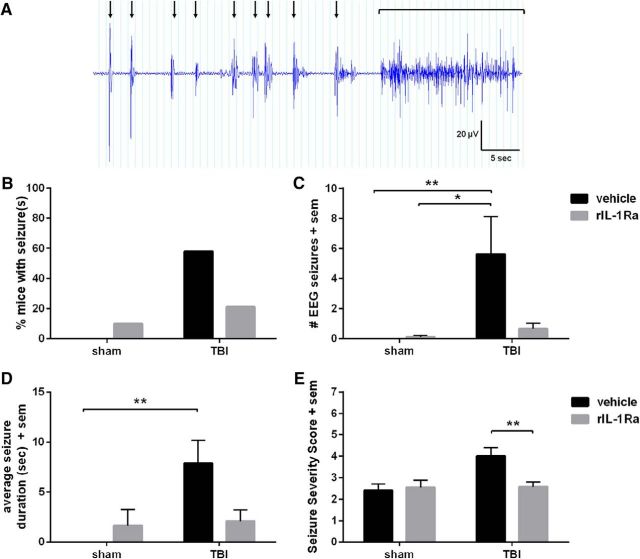Figure 7.
Acute rIL-1Ra treatment reduces the chronic evoked seizure response. PTZ results in a stereotypical pattern of brief, abnormal epileptiform events paired with isolated myoclonic contractions (A, black arrows), which was observed in some mice to culminate in a generalized convulsive seizure (black bracket). Fifty-eight percent of vehicle-TBI mice exhibited an evoked seizure in response to PTZ, compared with only 21% of IL-1Ra-TBI mice (B; Fisher's exact test, p = 0.07). Quantification of EEG seizures (C) revealed an increase in vehicle-TBI mice but not in rIL-1Ra-TBI mice compared with their respective sham controls (Kruskal–Wallis test, p < 0.01; post hoc, p < 0.01), but no increase in rIL-1Ra-TBI mice compared with their sham controls. Average seizure duration (D) was similarly increased specifically in vehicle-TBI mice compared with sham controls (p < 0.01). The overall Seizure Severity Score (E) revealed a significant effect of injury (F(1,50) = 4.96, p = 0.03) and a treatment × injury interaction (F(1,50) = 4.65, p = 0.04), with post hoc analysis finding an elevation only in vehicle-TBI mice compared with IL-1Ra-TBI mice (p < 0.01). n = 11/group (sham) and 15–19/group (TBI); *p < 0.05, **p < 0.01.

